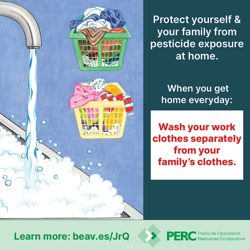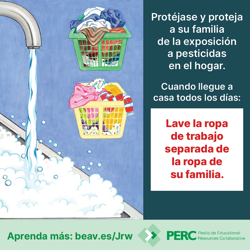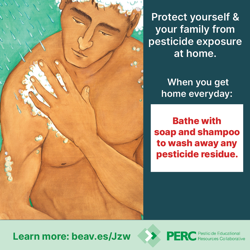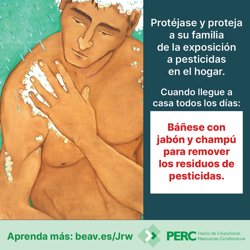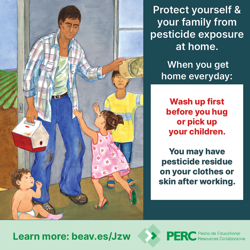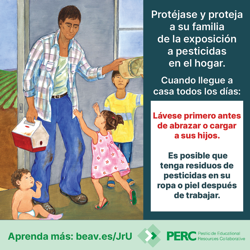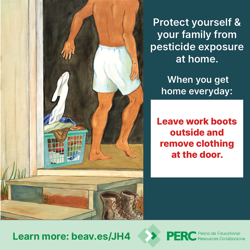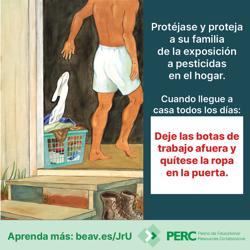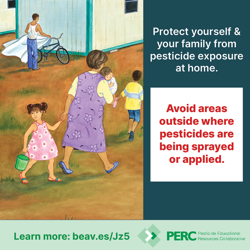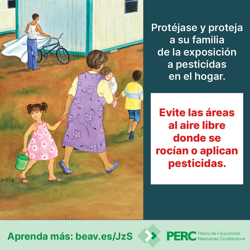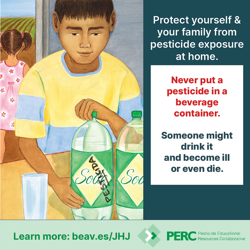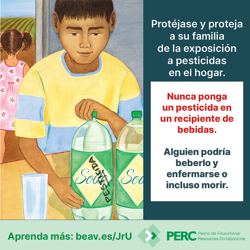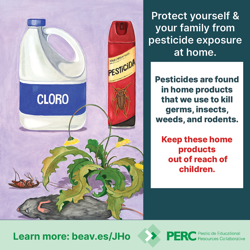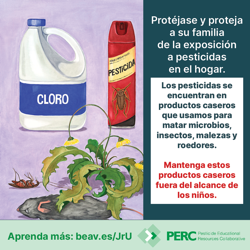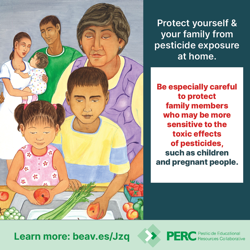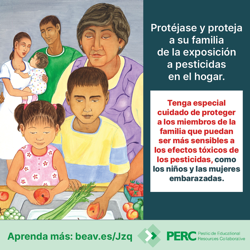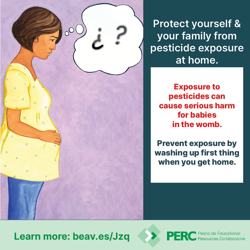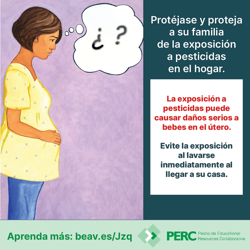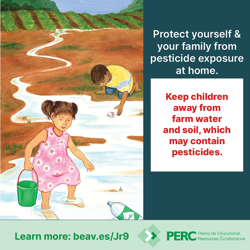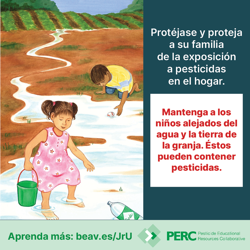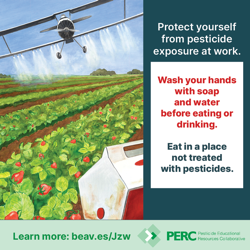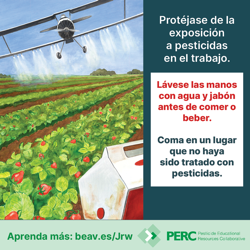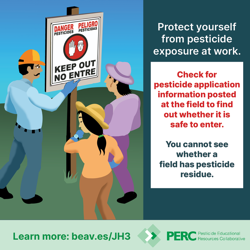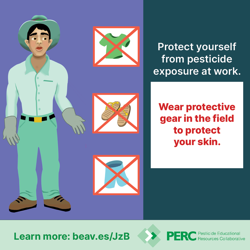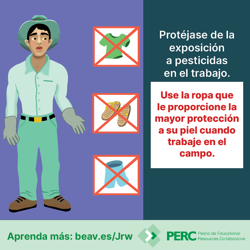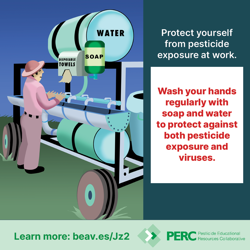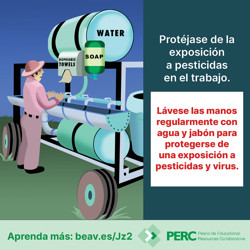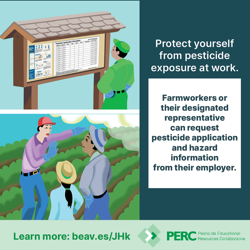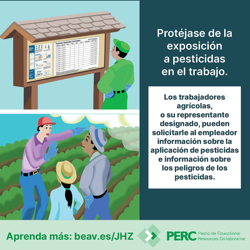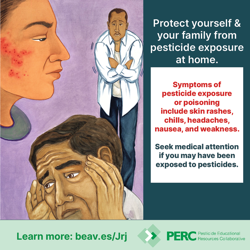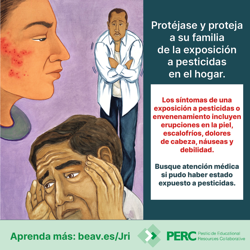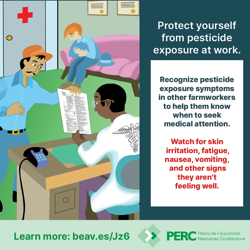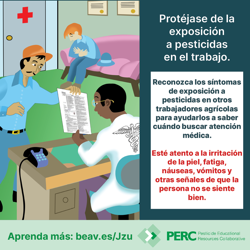Promote worker safety with us!
Use any of the images to inform farmworkers and their families about practices that reduce the risk of pesticide exposure.
- What is it? It’s a collection of 17 images for posting on Twitter
- Available in English and Spanish (34 images total)
- They feature safety messages for farmworkers and their families
- This is a great time of year to remind workers about minimizing pesticide exposure
Download all Twitter images (20.7 MB zip)
(Images for Facebook and Instagram are also available)
- Download the collection to share on Twitter - anywhere you can share an image online.
- Create a campaign that builds over time, sharing one or more images per day.
- Ask your networks to share their experiences about reducing pesticide exposure.
- Post the short link in the text below each image in order to make it clickable.
- You could customize the post with your own text, and link to your organization!
- Tag workers and employers in agriculture, forestry, and nurseries.
- Add #campesino #farmworker
You may view/download individual high-resolution images from the collection by clicking on any of the thumbnails below.
Series 1: Protect yourself and your family from pesticide exposure when you get home
Series 2: Protect yourself and your family from pesticide exposure.
Series 3: Some people are more sensitive to pesticides.
Series 4: Protect yourself from pesticides at work.
Series 5: Seeking Medical Attention
This kit was produced with support from the US Environmental Protection Agency (EPA), the Pesticide Educational Resources Collaborative (Cooperative Agreement #X8-83616301), and the Association of Farmworker Opportunity Programs (Cooperative Agreement #X8-83237601). The text was reviewed for accuracy by EPA personnel, but it does not necessarily reflect the views of the EPA. If you have any questions, please contact us at PERCsupport@ucdavis.edu.
Contributors include:
Kaci Buhl, Oregon State University
Lauren Dana, Legal Aid Chicago
Melanie Forti, Association of Farmworker Opportunity Programs
Carmina Hanson, North Carolina Department of Agriculture & Consumer Services
Chris Hedstrom, Oregon State University
Catherine LePrevost, North Carolina State University

Regulatory Guidance
Browse brief guides about protections for workers and handlers, the AEZ, posting, PPE, exemptions, training, respirators, and more, in English and Spanish.
